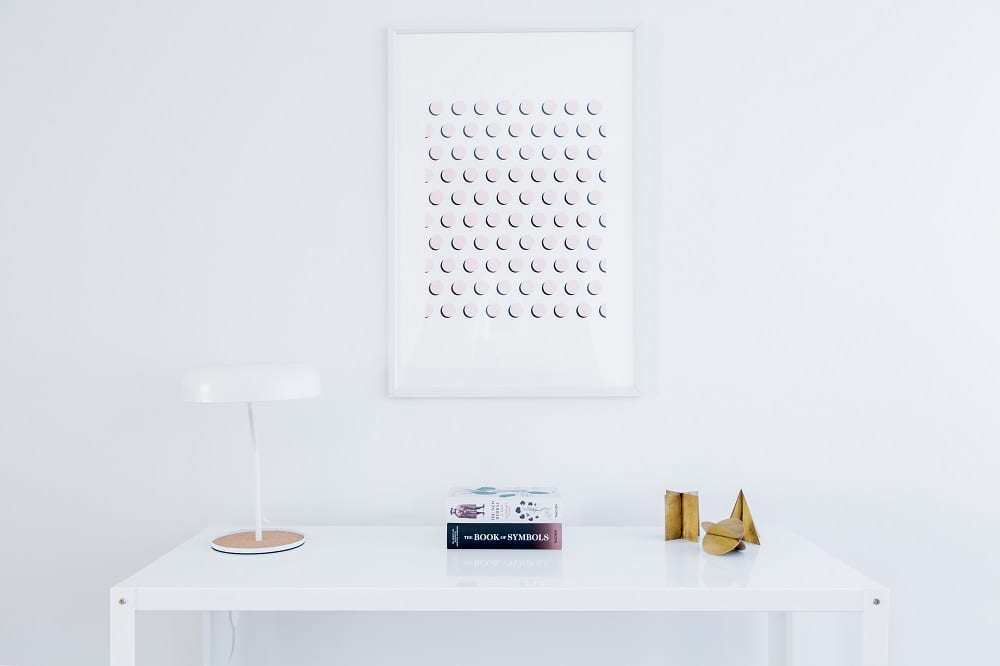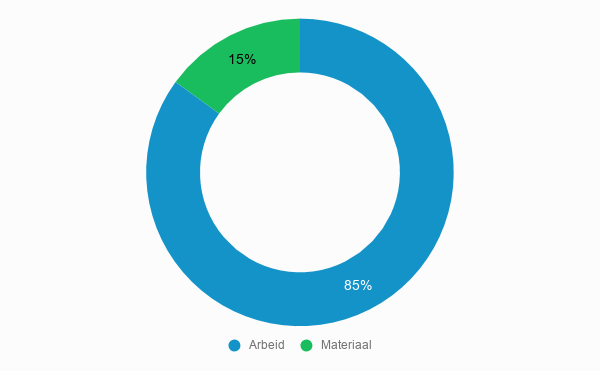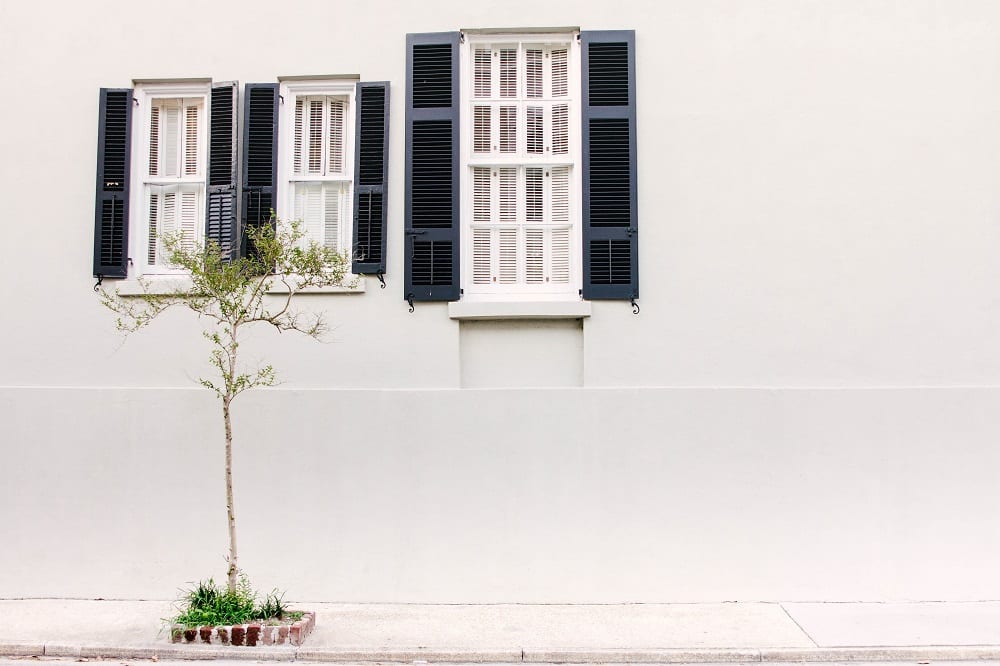Are your walls in need of a new colour or do you want to give your home a fresh look? Painting your wall will quickly restore the look of your home. Curious about average prices and looking for the best option? It will all become clear to you after reading this article.
How much does wall painting cost?
Do you choose to paint your wall yourself? Or will you leave that project to a professional painter? Below you will find a price indication for different painting techniques and average prices for various numbers of m2.
| Work | Average cost |
|---|---|
| Painting per m2 | £6 – £ 35 |
| Interior painting per hour | £ 40 – £ 50 |
| 30 m2 painting (bedroom) | £ 450 – £ 900 |
| 60 m2 painting (studio) | £ 900 – £ 1.800 |
| 135 m2 painting (flat) | £ 2,000 – £ 4,000 |
Looking for an exterior painter?
Would you like to paint your facade and hire an exterior painter to do so? Check out the articles facade painting and exterior painter costs for all the necessary information.
Hire a professional painter
Painting your wall does involve a lot: taking the preparations, buying the necessary materials and carrying out the project itself. Painting a wall in a home is quite a project. A painter takes all these worries away from you. Not only is it practical, but it is also guaranteed to give you a clean end result: a professional painter will make sure the walls are given a perfect coat of paint again.
Find the best professional for your project and get free quotes.
Start

Price examples
To clarify the prices from the table above, we have outlined three situations below.
Most commonly chosen painting
Suppose the walls of your ground floor have a total area of 75 m2, you will arrive at an average price of £1,100 to £1,800. The exact price will depend differently on whether you have your walls painted or sauced.
Larger project
If you choose to have the interior walls of a detached house painted, you will arrive at an average price of £6,750. Think of a wall area of about 450 m2.
Small project
If you choose to have walls of about 30 m2 in your bedroom painted in two colours, you will arrive at an average of £675 including paint and VAT. For a painter, this is a more specific project than the two examples above, as the painter will spend a relatively large amount of time including taping the surface and cleaning. It is often cheaper to have a larger surface painted than a smaller one because the painter can then continue in one go.
Walls sprayed or walls sauced?
When painting a wall, do you opt for spraying, or do you prefer to paint the walls with a brush or roller? As can already be seen in the table, spray painting is just a bit cheaper than whitewashing. However, both techniques have their advantages and disadvantages.
Spraying walls
With spray painting, paint is sprayed onto the wall. Major advantages are the speed and the even result that is easy to achieve with this technique. However, spray painting releases spray mist: small paint particles that float through the air and thus potentially stain the floor or furniture, for example.
Spraying therefore requires a lot of preparation: all surrounding surfaces must be completely covered or taped. On walls with many windows, this can therefore be unfavourable.
Sanishing walls
Sanishing walls is the traditional way of painting: it is done with a roller and brush. Paintwork is more labour-intensive than spray painting, which means it costs more on average than spray painting.
But it does have the advantage that it is more precise and therefore very suitable for detailed work or walls with many corners, window frames or other interruptions. It is also ideal if you just want to touch up the paint on the wall.
Tips for painting a wall without streaks
How to get an evenly painted wall? The following handy tips will help a painter achieve the desired end result. Even if you decide to take the brush in hand yourself, the following tips are therefore useful to keep in mind.
Preparation is half the battle
This first tip seems logical, but it is still good to think about it and take the time to prepare. Make sure everything is well taped off and the walls are well cleaned. Any cracks and holes should be filled and sanded so that you get a nice end result later.
Don’t set the temperature too high
It might be nice to start working in a comfortably warm room, but it’s not good for painting. This is because in warm temperatures paint dries faster. As a result, it is quite possible that you will paint over semi-dry paint, which will cause streaks more quickly.
Use enough paint and make sure you apply the right pressure
Use enough paint when painting to avoid streaks. Next, be careful not to put too much pressure on the paint roller. This will leave too little paint on the wall. Again, this quickly causes streaks. It is often necessary to apply several layers for a perfect coverage.
Price structure when getting walls painted

Influences that determine the total price
If you are getting your wall painted then the total price is determined by various influences. We list the biggest influences.
Influence 1: Type of property
Prices obviously depend on the project the painter is doing. A detailed project is more likely to be charged by the hour: this is because such projects take longer to paint a m2. Larger projects like painting the whole house are generally charged per m2 though. In the tables below, see the average wall area per house type, as well as the corresponding price indications.
| Wall painting per house type | Average cost |
|---|---|
| Appartment (135 m2) | From £2.000 |
| Tween house (225 m2) | From £ 3,400 |
| Corner house or semi-detached house (300 m2) | From £ 4.500 |
| Detached house (450 m2) | From £6,750 |
Influence 2: Type of paint
The choice of paint type is important. A painter will know exactly which type of paint is right for your walls to suit your needs. You can also choose to get the paint yourself. Below is a price indication of the different types of paint that can be used when painting a wall. When choosing paint, note that while higher quality paint is more expensive, it also gives better coverage.
| Paint type | Average price per litre |
|---|---|
| Ground paint / primer / primer | £ 20 – £ 70 |
| Latex paint for indoors | £ 15 – £ 30 |
| Acrylic paint | £ 30 – £ 80 |
Preprimer, primer or undercoat?
When choosing paint, look carefully at what your walls need. Primer, primer and primer are all meant as a base coat when painting. They form the connection between the material to be painted and the final paint. So in that sense, they have the same function. However, there are some differences.
Ground paint fills irregularities in the substrate and thus makes a surface even. A primer provides better protection against rust and is often used on materials such as metal and plastic. A primer is also very suitable for porous substrates.
Pre primer is mainly used for substrates that absorb, such as a freshly plastered wall.
So look carefully at your situation and choose the base that suits your project.

Incentive 3: Combining paintwork
When you choose to have your wall painted, why not have other projects you might have in mind included right away? Think about painting the stairs, painting a dormer or whitewashing your ceiling. Because the painter can do several projects at the same time, it is often possible to agree on a nice total price. Below you will find a price indication of the various painting projects.
| Type of painting | Average costs incl. VAT | Details |
|---|---|---|
| Painting the ceiling | £ 500 – £ 1.500 | From 30 to 100 m2 |
| Doors painting | £ 300 – £ 2,000 | 2 to 20 doors incl. door frames |
| Dormer painting | £ 400 – £ 1.500 | From just side panel and side beam to complete dormer window |
| Staircase painting | £ 600 – £ 800 | 1 staircase sanding, cleaning and painting |
| Frame painting | £ 500 – £ 1.800 | From 7 m2 to all the external window frames of a house |
Incentive 4: Additional options
Did you know that it is possible to take out a maintenance subscription? Every year, the painter will come by to check whether the paintwork on the wall is still in good condition. Is this not the case? Then the painter will touch it up. Fixed prices can be agreed for this subscription, so there are no surprises and you are always sure that the quality of the paintwork is perfect.
Most people choose a 10-year maintenance subscription. For those 10 years, you will spend on average between £5,000 and £6,000. This will include an annual check-up, maintenance twice and a one-off repainting of your home. This will cost you around £45 a month.
Want more pricing information on maintenance contracts? Go to: Painting maintenance contract.
Find the best specialist for your project and get free quotes.
Start